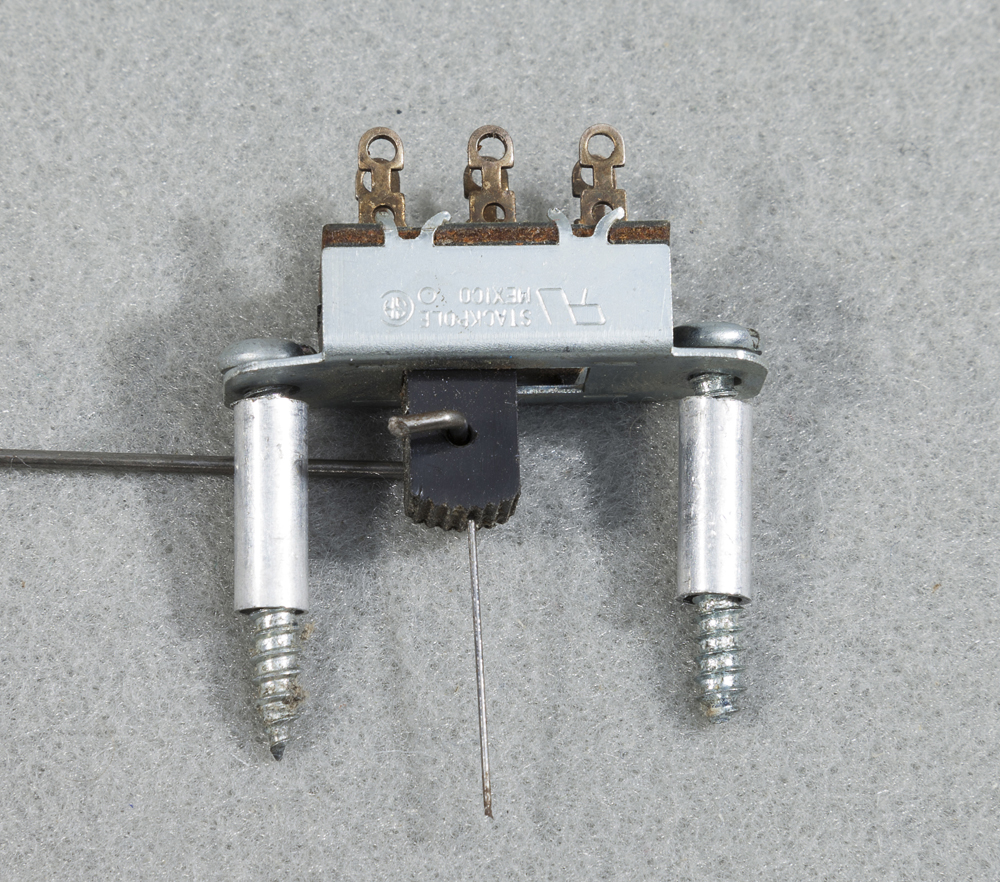
Q: I’m researching methods to power turnout frogs on my N scale layout. I’m using Atlas code 55 flextrack and Digital Command Control. The majority of turnouts will have manual throws. I’ve read that electronic frog juicers should be used judiciously as they place a continuous load on the power supply. I think single-pole double-throw […]
Read More…
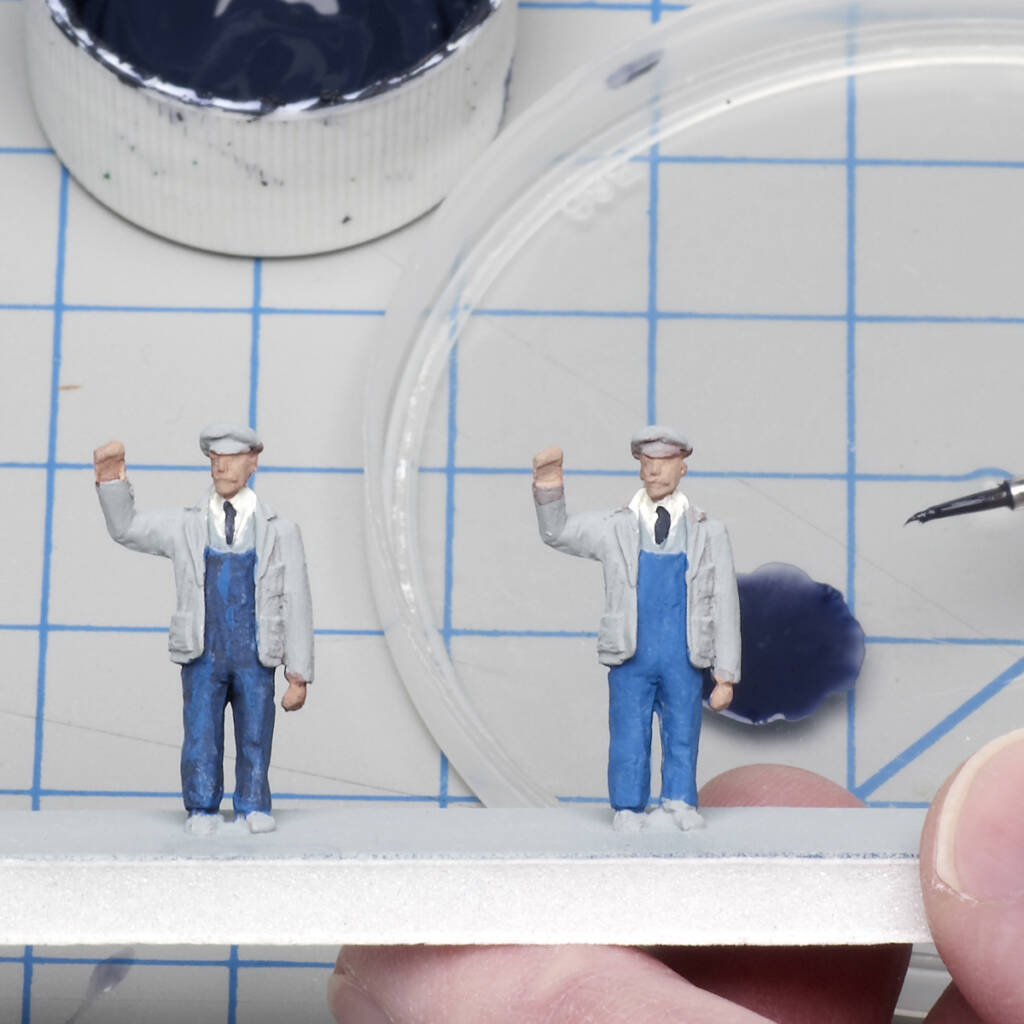
Adding scale people to your layout can be as simple as opening the box and gluing them in place. Manufacturers such as Preiser, Merten, Woodland Scenics, among others, offer a selection of realistic, factory-painted plastic figures for model railroads. However, if you have a railroad that requires a large population, it can be more economical […]
Read More…
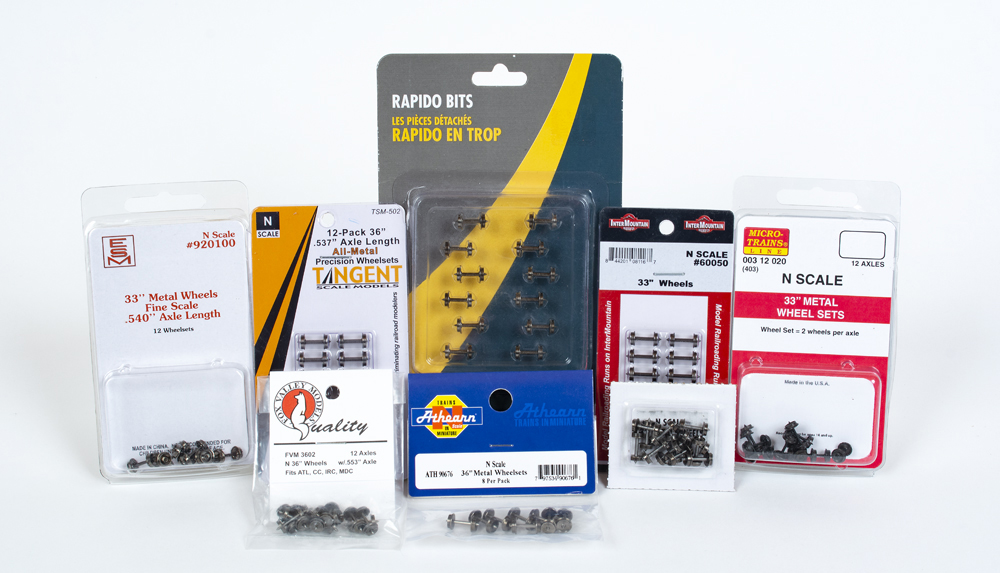
Q: I have some N scale cars from Micro-Trains. Recently, I swapped out the factory-installed plastic wheelsets with metal wheelsets, but now the cars don’t roll freely. What can I do to fix this? — Kelly Walton-Harper A: Metal wheelsets aren’t one-size-fits all. The first thing you’ll want to check is wheel size, as it’s […]
Read More…
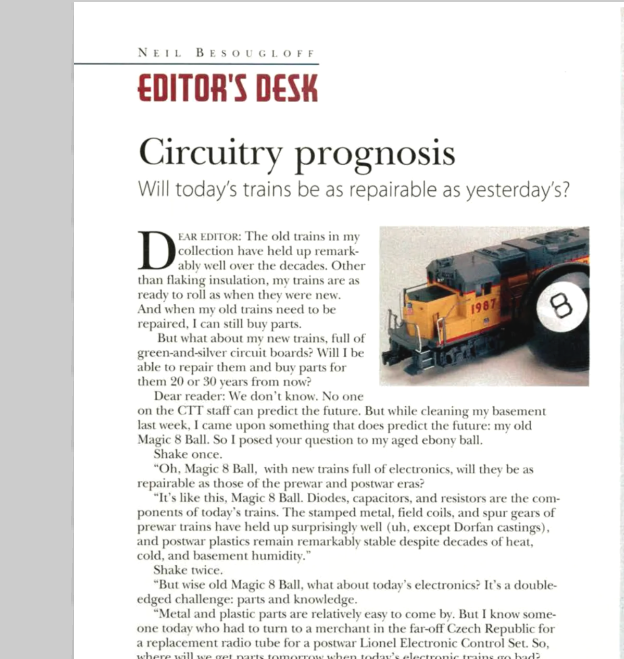
I came across this editoral from September 2000 issue from then Editor Neil Besougloff, and it made me smile. It still rings true 25 years later. What do you think? Dear Editor: The old trains in my collection have held up remarkably well over the decades. Other than flaking insulation, my trains are as […]
Read More…
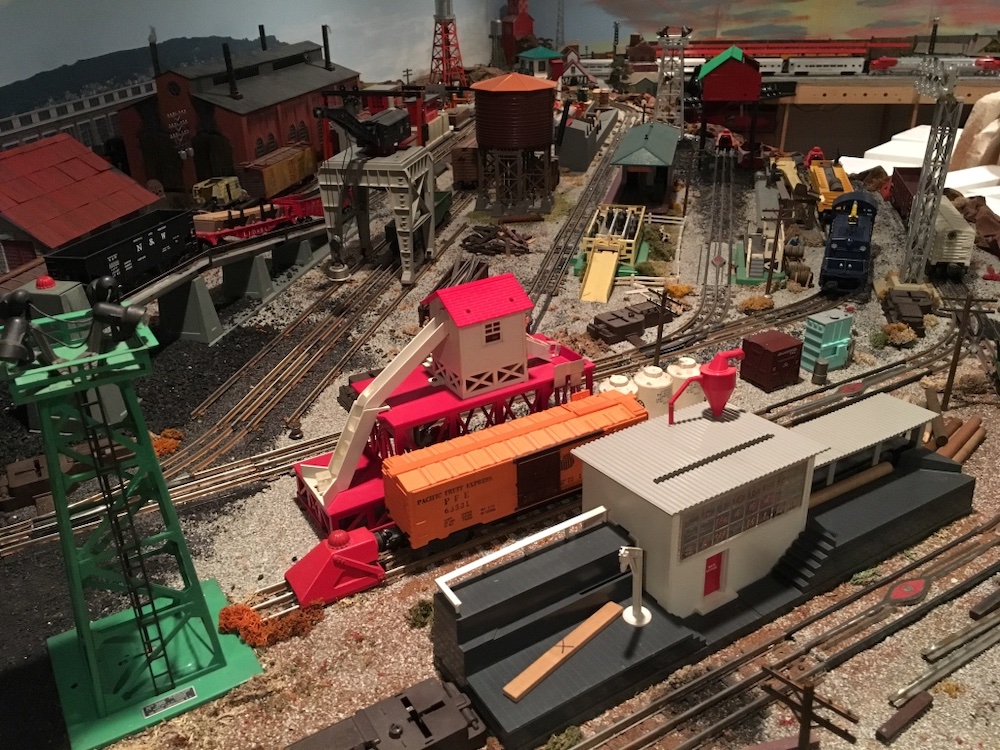
My layout, The “Casey” Line, was published in the September 2021 Classic Toy Trains. My 30-year project was based on reading a boxful of 1950’s Model Railroader magazines and compiling a list of the best features on model railroads from those articles. Fortunately, I was able to include all the scenic features recommended in those […]
Read More…
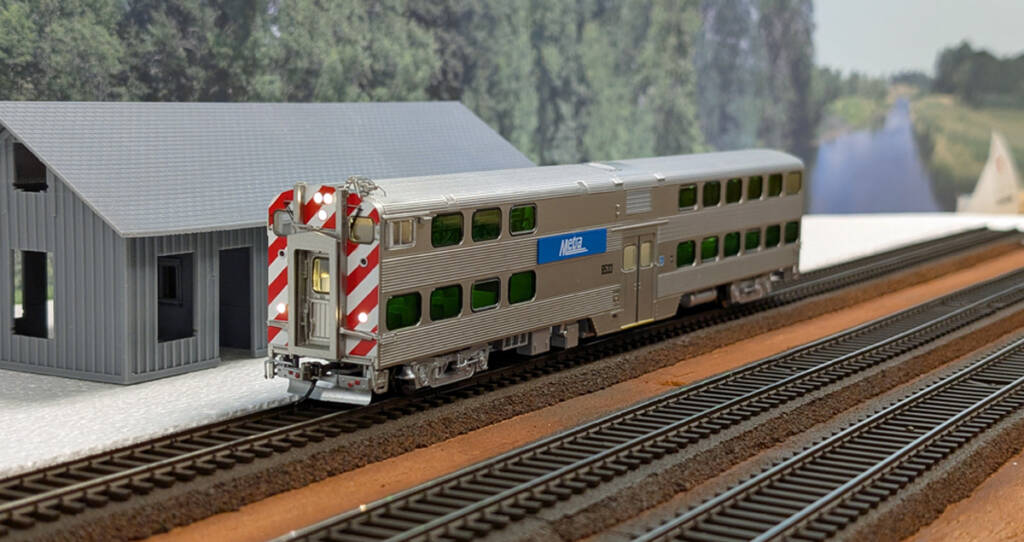
I’m a huge fan of commuter services, and that definitely includes Chicago’s Metra. So when I heard that Atlas was releasing Metra Nippon Sharyo gallery cars in HO scale, I had to get my hands on some. Since Metra runs a push-pull operation, the Type 8500 cab car gets as much time leading trains as […]
Read More…
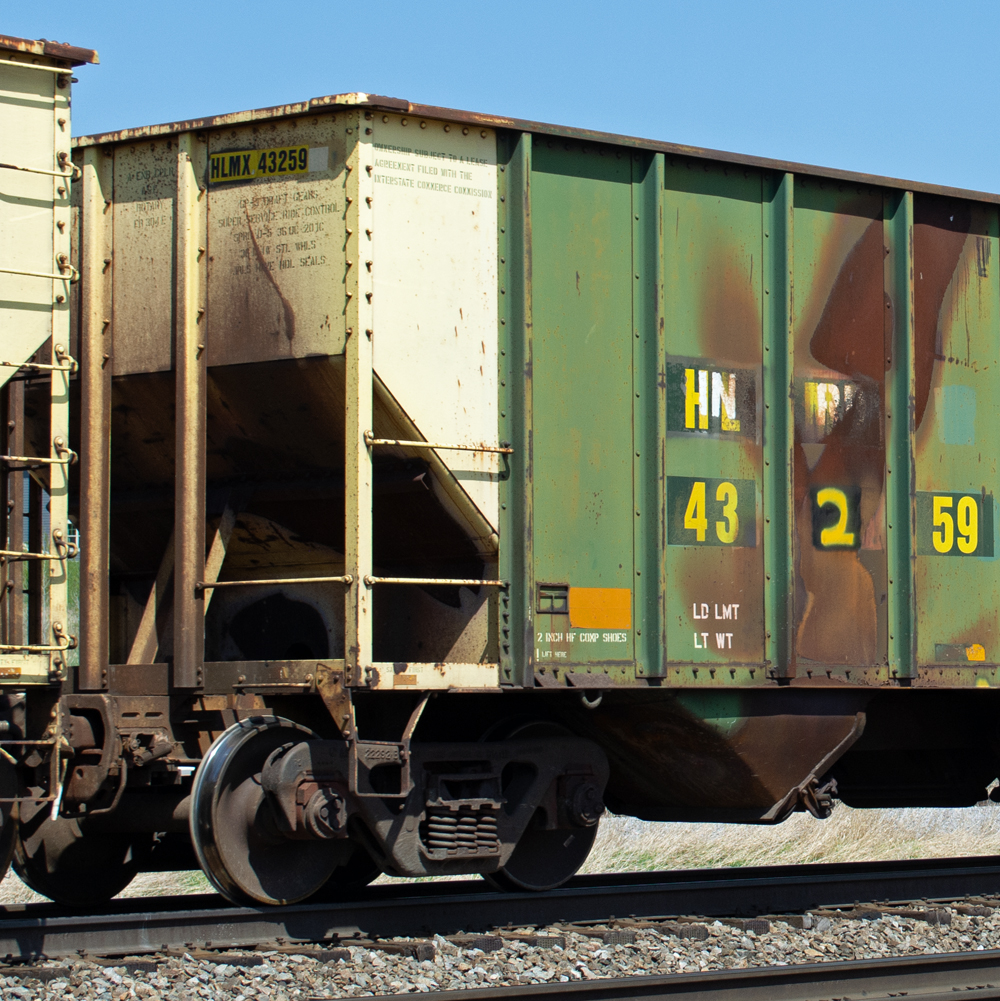
Q: What website is best for finding prototype photos of freight cars to help with realistic weathering? — Jim Veronico A: Though some websites are certainly better than others, I’m reluctant to declare a single website as the “best” for finding prototype freight car photos. Over the years, I’ve found that using multiple sites helps […]
Read More…
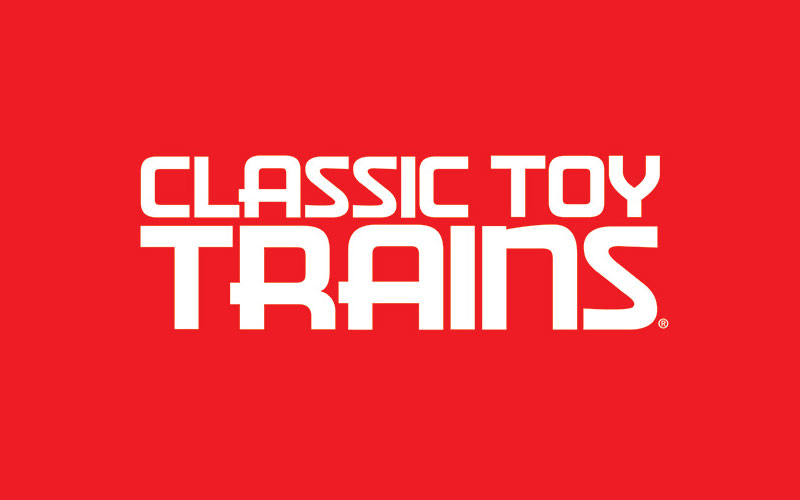
I recently bought a Lionel No. 2121060 American Flyer Baltimore & Ohio 4-6-2 Pacific locomotive and tender and would like to install Kadee couplers. I see holes on the bottom of the S gauge tender for mounting a scale coupler adapter, but I don’t know which adapter will fit there and how to mount it. […]
Read More…
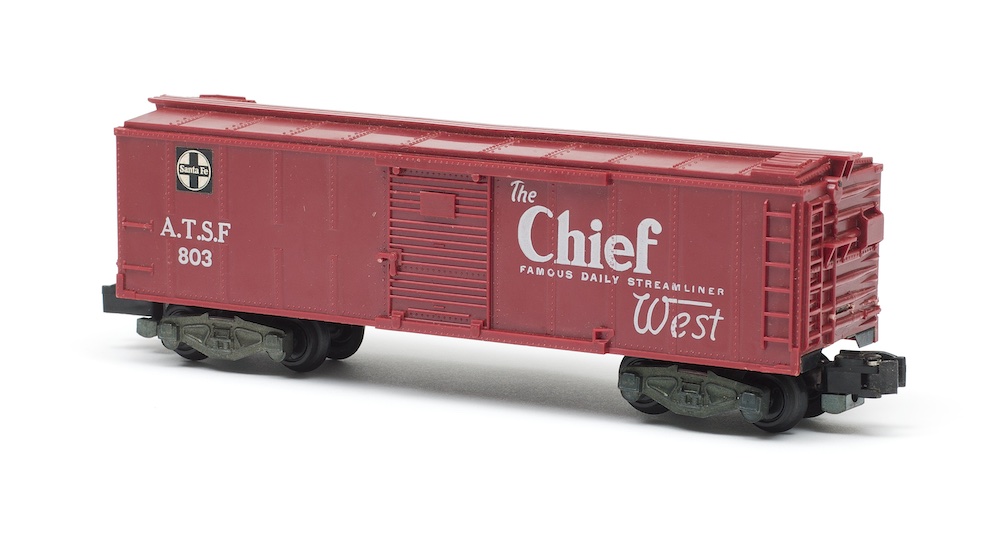
Do you have any suggestions for easily and safely removing the pins that hold the plastic body shell on various American Flyer freight and passenger cars from the postwar era? Using a pair of pliers has not worked. — Robert Lawrence You have to wedge a screwdriver or another tool between the body shell and […]
Read More…

Are you aware of any kind of commercial device that can prevent Lionel and MTH trains from running in reverse? Whenever any of my young grandchildren try to run a freight train in reverse, the cars inevitably derail and ruin our fun. This is an interesting problem to have! I can’t think of any device […]
Read More…
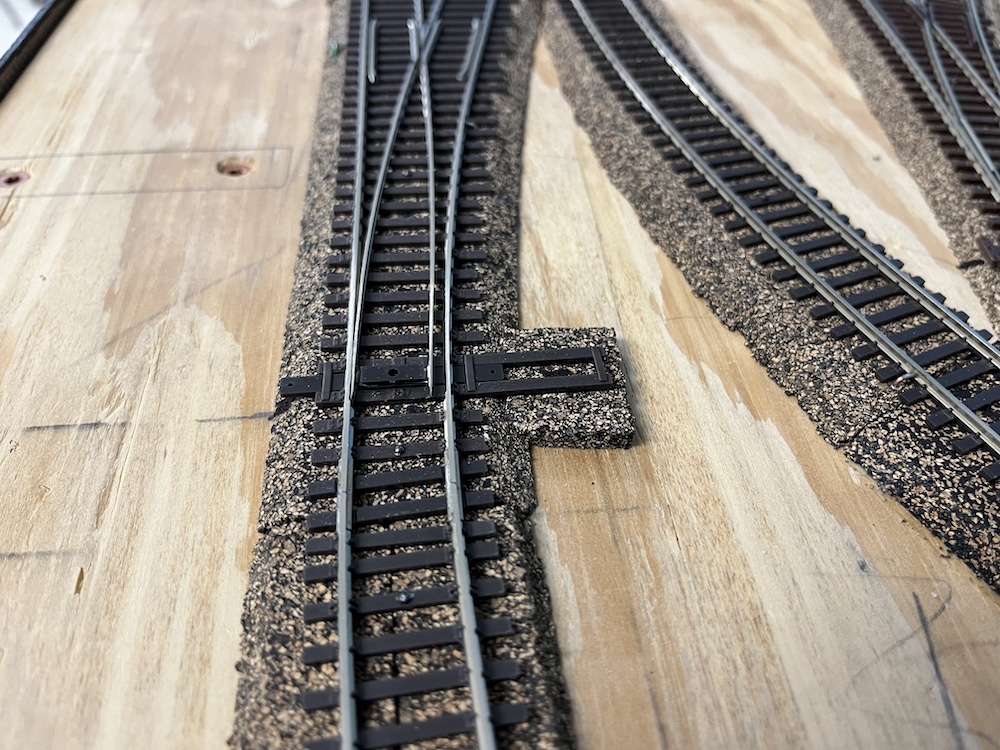
Learning how to install roadbed at a turnout, a place where tracks meet or diverge, is a valuable skill for all model railroaders to have. Installing strips of cork or foam roadbed for straight or curved tracks is a straightforward process. Mark the center line, split the roadbed sections into flexible strips, and glue them […]
Read More…
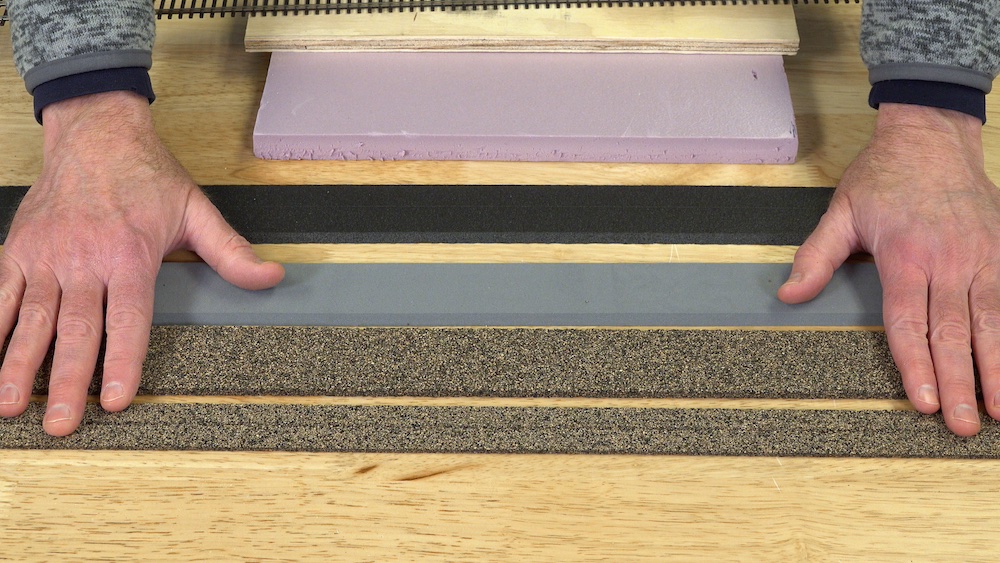
For model railroaders choosing a separately applied roadbed for laying track, two popular options dominate: cork and foam. Each has its own strengths and weaknesses, as well as impacting factors such as ease of installation, durability, and realism. Let’s dive into the details and help you make an informed decision on cork vs. foam roadbeds. […]
Read More…











